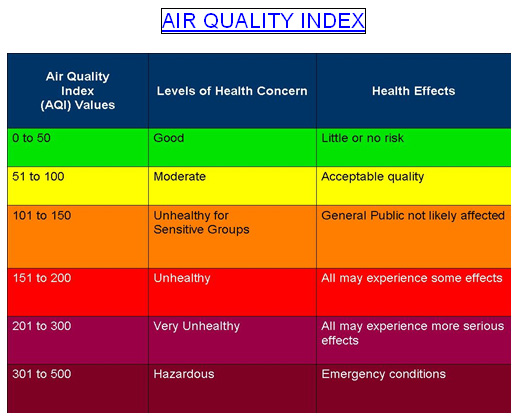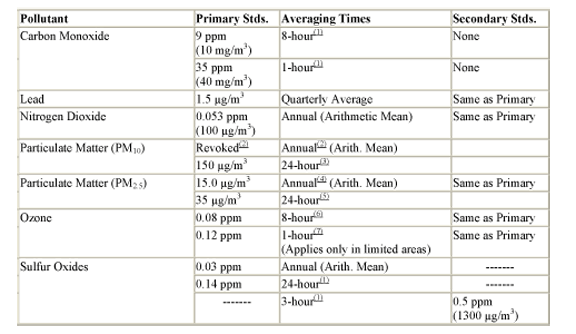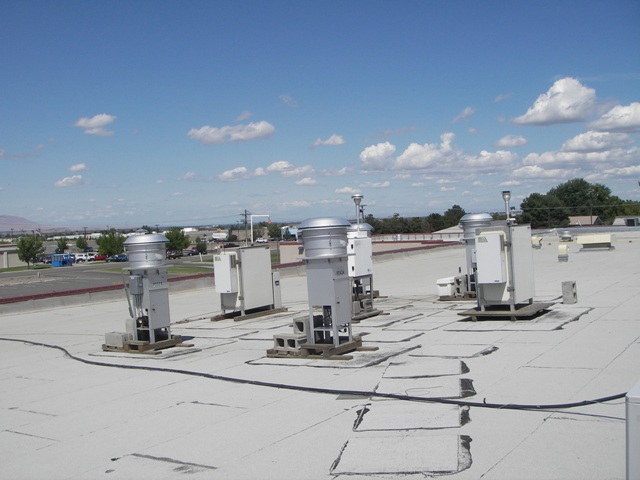
Air Quality
Why it matters:
- With every breath you take, your lungs are exposed to the world around you, filtering over 8,000 liters of air a day. Breathing dirty air hurts the body both by inflaming and destroying lung tissue and by weakening the lungs’ defenses against contaminants and infection.
- Over 500,000 people in Washington state have lung disease. For them, air pollution—even at moderate levels—may mean discomfort, limited activities, increased use of medications, more frequent visits to doctors, and even a shortened life.
- Even otherwise healthy people can suffer when pollution levels are high. Symptoms may include watery eyes, runny nose, coughing and wheezing. Breathing dirty air is especially hard on the elderly, pregnant women, as well as young children and infants whose lungs are still developing.
How we’re doing:
- Air quality in our region and across the United States has dramatically improved since the 1970s and 1980s. This history was developed by Spokane Regional Clean Air Agency.
- In Benton County, particulate pollution and air toxics are our greatest air quality concerns. These pollutants pose a range of health impacts – such as respiratory ailments, heart disease and cancer – which is why we support and implement programs and policies designed to reduce their emissions, and our risk of exposure to them.
- Agricultural irrigation development from the 50’s to the 70’s increased the stability of the landscape. In the 80’s and 90’s there were extended periods of below normal precipitation. Dust storms during these years resulted in a number of exceedances of the air pollution standards for PM10.
- During the late 1980s and early 1990s Benton County was subject to a large number of exceedances of the 24-hour National Ambient Air Quality Standard (NAAQS) for particulate matter ten microns or less (PM10).
- These exceedances were recorded in Spokane, Kennewick, and Wallula, Washington. An examination showed a close correlation to high wind events. The exeedances are primarily attributable to activity on agricultural fields, although other sources may contribute.
- As a result of a great deal of work and cooperation with the agricultural and business communities, the Conservation Districts and Washington State University, measures have been implemented that keep recent PM10 exceedances at a level far below previous decades.
- Since 2005 Benton County consistently has not violated any of the federal, health-based air quality standards set by the U.S. Environmental Protection Agency (EPA).
Air Quality Challenges: - As we look ahead our challenges include:
- Meeting more stringent and health protective air quality standards for coarse and fine particulate matter being developed by the U.S. Environmental Protection Agency
- Implementing new federal programs to protect the public from hazardous air pollutants
- Maintaining adequate program funding to meet these and other challenges
- Supporting local businesses in their efforts to comply with air quality regulations.

Air Quality and Health
The U.S. Environmental Protection Agency (EPA) establishes National Ambient Air Quality Standards for six criteria pollutants. The chart below provides key information on each of these pollutants. To learn more about the two pollutants of most concern in Benton County (fine particles and coarse particles) click here.
| Criteria Pollutant
|
Description & Standard
|
Sources
|
Health Effects
|
|---|---|---|---|
| Particulate Matter Up to 10 Microns in Diameter (PM10)
|
Particles less than 10 microns in diameter in size. 24-hour Standard: 150 micrograms per cubic meter of air, averaged over 24 hrs.
|
Dust stirred up from paved and unpaved roads, construction activities, windblown dust.
|
When inhaled, fine particles travel deep in the lungs, damaging delicate lung tissue. Especially harmful to those suffering from existing heart and lung diseases, as well as the pregnant, young children, and the elderly.
|
| Fine Particulate Matter Up to 2.5 Microns in Diameter (PM2.5)
|
Fine particles less than 2.5 microns in diameter in size. 24-hour Standard: 35 micrograms per cubic meter of air, averaged over 24 hrs. Annual Standard: 15 micrograms per cubic meter of air.
|
Combustion-related, motor vehicles, wood burning, open burning, industrial processes.
|
(same as above)
|
| Carbon Monoxide (CO)
|
An odorless, tasteless, colorless gas which is emitted from any form of combustion. Standard: 9 parts per million, averaged over 8 hrs.
|
Automobiles, wood burning devices, outdoor burning, and industrial combustion sources.
|
Deprives the body of oxygen by reducing the blood’s capacity to carry oxygen: causes headaches, dizziness, nausea, listlessness and in high doses, may cause death.
|
| Ozone (O3)
|
Formed when nitrogen oxides and volatile organic compounds react in the presence of sunlight. A component of smog. Standard: 0.075 parts per million, averaged over 8 hours.
|
Automobiles, industry, gasoline storage and transfer, gasoline refueling, paints, solvents.
|
Irritates eyes, nose, throat, and respiratory system; especially bad for those with chronic heart and lung disease, as well as the very young and old, and pregnant women.
|
| Nitrogen Dioxide (NO2)
|
A poisonous gas produced as a byproduct of high combustion temperatures. Standard: .053 parts per million, annual average. Effective 4/12/2010 - EPA established a new 1-hour standard of 100 parts per billion (0.100 ppm)
|
Fossil fuel power generation, mobile sources, industrial combustion processes.
|
Harmful to lungs, irritates bronchial and respiratory systems; increases symptoms in asthmatic patients.
|
| Sulfur Dioxide (SO2)
|
A gas resulting from the burning of sulfur-containing fuel. Standard: .14 parts per million, averaged over 24 hours. Effective 8/23/2010 - EPA is establishing a new 1-hour standard of 75 parts per billion (0.075 ppm) and revoking the 24-hour and annual standards.
|
Fossil fuel power plants, non-ferrous smelters, pulp production, primary aluminum production.
|
Increases symptoms in asthmatic patients; irritates respiratory system.
|
| Lead (Pb)
|
Lead emissions throughout the country have been significantly reduced since the conversion to unleaded gasoline. Between 1976 and 1995, ambient levels of lead declined 97%. Effective 1/12/209 - EPA established a new standard of 0.15 micrograms per cubic meter of air for a 3-month rolling average.
|
Smelters and battery plants.
|
Affects motor function and reflexes and learning; causes damage to the central nervous system. Kidneys and brain. Children are affected more than adults.
|

Air Quality Index
EPA’s Air Quality Index (AQI)
What is EPA’s Air Quality Index?
The Air Quality Index (AQI) is a national uniform system, defined and used by the EPA, to report pollution levels for the criteria air pollutants regulated under the Clean Air Act. The AQI provides citizens with information about the general health effects associated with different pollution levels.
In Benton County, particulate air pollutants are monitored. To learn more about these pollutants and federal air quality standards for each, click here.
The AQI converts the highest measured pollutant concentration in a community’s air to a number on a scale of 0 to 500. The data is reported as a rolling 24-hour value which is updated hourly and reported here.

How does unhealthy air affect people?
Fine particulate matter is a major air pollutant that has been shown to cause a number of health symptoms and complications. People will have difficulties breathing polluted air depending on their age and their health. People most sensitive to air pollution include:
- Infants and children
- Older adults (those 65 and older)
- People with lung and heart disease, stroke, diabetes, or those with a current respiratory infection.
People sensitive to air pollution may experience problems sooner and at lower levels of pollution. When people are active they breathe more air into their bodies. If air pollution levels rise, they will take in more pollutants. The amount of outdoor activity that may cause difficulties for people will be different. For example, when air pollution levels rise, daily activities such as walking the dog may cause problems for some people. Others may not be affected until doing more strenuous activity such as running. People should limit outdoor activity depending on how air quality affects them.

Air Quality Standards
 The U.S. Environmental Protection Agency establishes National Ambient Air Quality Standards to protect public health from adverse effects of air pollution. Standards are set for six outdoor air pollutants, called Criteria Pollutants.
The U.S. Environmental Protection Agency establishes National Ambient Air Quality Standards to protect public health from adverse effects of air pollution. Standards are set for six outdoor air pollutants, called Criteria Pollutants.
The Clean Air Act, which was last amended in 1990, requires EPA to set National Ambient Air Quality Standards (40 CFR part 50) for pollutants considered harmful to public health and the environment. The NAAQS are set for six outdoor air pollutants and are found here.
A Closer Look at Air Toxics
In addition to criteria air pollutants, Benton Clean Air’s work involves reducing air toxics. Air toxics are a group of over 400 pollutants known or suspected to cause a number of health problems, including cancer and birth defects, as well as damage to lungs, and immune and nervous systems.
In our region, air toxics come primarily from particulate matter contained in diesel exhaust and smoke from wood burning. While air toxics do not have federal ambient air quality standards, our research indicates that they are occasionally present in our air at levels that pose a health risk to residents.
EPA has information on air toxics here.

Air Pollutants - Frequently Asked Questions
Current levels of PM in the Tri-Cities?
The BCAA currently measures air pollution with a rating called PM2.5, and PM10. The “PM” refers to Particulate Matter. The number after the “PM” refers to the size of the particle in micro-meters; PM10 is about 1/7th the diameter of a human hair and PM2.5 is about 1/28th the diameter of a human hair.

The Air Quality Index (AQI) is a way to simplify the impacts of air pollution through the use of a color chart. If you want to know the actual concentration of the pollution, it is given above the charts with the units of “ug/m3” or micrograms per cubic meter. For most people, the color chart is easier to understand.
The pollutant with the highest AQI is the pollutant that is most responsible for the health impacts. Since PM10 is a larger particle, it is more often associated with dust and has a higher AQI during windstorms and during the summer and fall. PM10 can trigger asthma and allergy symptoms. PM2.5 is a much smaller particle and is associated with smoke and vehicle exhaust. It usually has a higher AQI due to smoke from wildfires, stagnant air, and the winter when woodstoves are in use.
PM2.5 particles are generally associated with smoke and combustion sources. Because of the smaller particles, PM2.5 can have greater health effects than larger particles such as dust and ash.
How does Benton County’s Air Quality compare with other areas?
Compared to other urban areas in Washington State, Benton County has some of the cleanest air over the majority of the year. Our average pollution levels are well below the national average. However, on occasion, Benton County does have problems with a pollutant called “particulate matter”. Particulate matter is a federally regulated pollutant; in high concentrations, it poses a health risk to both sensitive populations and to healthy, active people as well.
What is particulate matter?
Particulate matter, or “PM”, is a form of pollution composed of very small particles of dust, smoke, soot, and other materials. PM comes in many shapes, sizes, and compositions. However, the Environmental Protection Agency (EPA) has identified through many years of scientific study, that two sizes of PM have identifiable health risks.
These two types of PM are called PM10 and PM2.5. The number refers to how small the particles are. PM10 is composed of particles that are 10 microns or smaller in diameter; this is about 1/ 7-th the diameter of a human hair. PM2.5 is even smaller, being only 2.5 microns across or 1/28th the diameter of a human hair.
The severity of the health effects from breathing these particles depends upon the concentration, or “how much” of the PM is in the air. The EPA has set health standards, called National Ambient Air Quality Standards (NAAQS), for these and other air pollutants, called “criteria pollutants”. The criteria pollutants are considered to have the greatest adverse effect on the people. Each NAAQS has an associated concentration and duration that areas cannot exceed.
How is PM harmful of health?
PM10 and PM2.5 are among the most harmful of all air pollutants. When inhaled these particles evade the respiratory system’s natural defenses and lodge deep in the lungs.
Health problems begin as the body reacts to these foreign particles. PM can increase the number and severity of asthma attacks, cause or aggravate bronchitis and other lung diseases, and reduce the body’s ability to fight infections.
Although particulate matter can cause health problems for everyone, certain people are especially vulnerable to the adverse health effects of PM. These “sensitive populations” include children, the elderly, exercising adults, and those suffering from asthma or bronchitis. The important thing to consider is that healthily, active people are also at risk because those individuals are often outside and are breathing more air during exercise, thus increasing their exposure.
Of greatest concern are recent studies that link PM exposure to the premature death of people who already have heart and lung disease, especially the elderly.
Where does PM come from?
In the western United States, there are sources of PM in both urban and rural areas, major sources include:
-
Activity-related and wind blown dust from construction and agriculture
-
Wind blown dust from open lands.
-
Outdoor and agricultural burning.
-
Wood burning stoves and fireplaces.
-
Wildfires.
-
Industrial sources.
-
Motor vehicles.
PM is a mixture of materials that can include smoke, soot, dust, salt, acids, and metals. Particulate matter also forms when gases emitted from motor vehicles and industry undergo chemical reactions in the atmosphere.
What can I do to reduce PM in Benton County?
-
Here are a few things individuals, business, and other organizations can do immediately to reduce the threat of PM:
-
Reduce travel on days with poor air quality.
-
Avoid using your wood stove and fireplace on days that have poor air quality.
-
Drive slowly on unpaved roads and other dirt surfaces
-
Get involved with air quality improvement programs in your community
-
If you own or operate an industrial source of PM, comply with local rules that apply to your operation. Work with local agencies to develop strategies that will further reduce PM emissions.
Other Questions?
If you have any questions about Particulate Matter, PM10, PM2.5, blowing dust, or smoke impacts from agriculture, forest burning, or wildfires, please contact BCAA.
Thanks to the California Air Resources Board for their information on Particulate Matter.

Air Quality Monitoring
 Air Quality Monitoring Nationwide
Air Quality Monitoring Nationwide
- Nationwide Air Quality information is here.
Air Quality Monitoring in Washington State
- Ecology manages a statewide network of air quality monitors, which cover the state and measure the presence of one or more pollutants.
- Ecology’s web site contains information about Washington’s Air Monitoring Network, and offers real-time air monitoring data in many areas of the state.
- Department of Ecology’s Air Quality Advisory Fact Sheet is here.
- A link to the 2010 Ambient Air Monitoring Assessment, by Ecology, is here.
Air Quality Monitoring in Benton County
- Air quality monitoring of Benton County is continuously conducted via our air monitoring site located on the roof of Tri-Tech at Metaline and Kellogg in Kennewick, Washington.
- Data from the air monitoring site are readily available on the Department of Ecology’s website.
- go to the website, and on the left click on “Air Monitoring/Real-Time Air Monitoring Data”; and then
- to see the air quality in Benton County, click on the monitor in Kennewick, as is shown in this image


